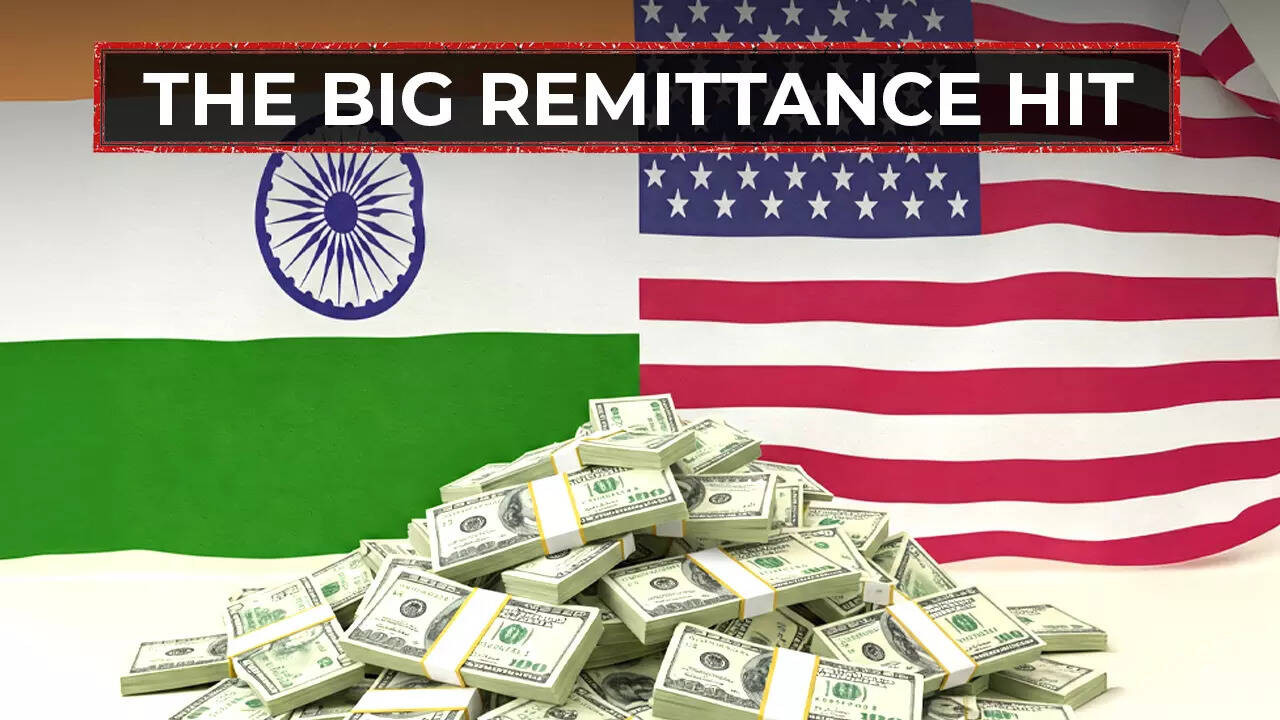India faces a potential remittance problem as the US tightens migration policies and proposes a 5% tax on remittances. This could significantly impact the $120 billion India receives annually, with the US being the largest contributor at $32 billion.
The Ripple Effect: How US Migration Shifts Could Sting the Indian Economy
Okay, let’s talk about something that’s buzzing in economic circles, and frankly, affects a lot more than just economists. It’s about the potential pinch coming our way from across the Pacific, courtesy of shifting tides in US immigration policy. We’re talking dollars, and potentially billions of them.
For years, the steady flow of skilled Indian professionals to the US has been a significant economic driver. Not just for the individuals themselves, who often find lucrative opportunities, but also for the families back home who rely on remittances – the money they send back. This inflow of foreign currency has quietly but powerfully bolstered the Indian economy, funding everything from education and healthcare to small businesses and investments. It’s a vital lifeline for countless families, particularly in states like Kerala and Punjab where international migration is deeply ingrained.
But what happens when that lifeline starts to fray?
That’s the question on my mind (and the minds of many financial analysts, I suspect) as we see the US potentially tightening its immigration screws. I’m not going to wade into the political debate surrounding US immigration – that’s a whole different can of worms. What I am going to look at is the cold, hard economic impact.
The truth is, any significant curb on migration to the US could trigger a domino effect with some serious consequences for India. Think about it: fewer Indian professionals working in the US translates directly to less money being sent home. And we’re not talking about small change. We’re talking about a remittance stream that contributes substantially to India’s foreign exchange reserves and, more importantly, provides crucial financial support to millions of households.
These remittances act as a powerful shock absorber, helping families weather economic downturns and providing a safety net in times of need. A drop in remittances could disproportionately affect vulnerable populations, widening the income inequality gap and potentially putting a strain on social welfare systems.
Beyond the immediate impact on individual families, there’s the broader ripple effect on the Indian economy. A decrease in remittances could dampen consumer spending, slow down economic growth, and even affect investment decisions. Think about the cumulative effect: less money flowing into local businesses, fewer opportunities for entrepreneurship, and a general slowdown in economic activity.
Now, before we descend into full-blown panic mode, let’s consider a few important nuances. The actual impact will depend on the scale and nature of any changes in US immigration policy. A minor tweak is unlikely to cause a major earthquake, but a significant overhaul could have far-reaching consequences.
Also, the Indian economy is incredibly resilient and adaptable. We’ve navigated economic storms before, and we’ll do it again. The key lies in proactive measures and strategic planning. This isn’t just about sitting back and watching the tide roll in; it’s about preparing for potential shifts and adapting our sails accordingly.
One crucial area of focus should be on fostering opportunities within India. Strengthening our domestic economy, creating more high-paying jobs, and investing in education and skills development are all essential steps in mitigating the potential impact of reduced remittances. By creating a thriving economy at home, we can reduce our reliance on overseas income and provide more attractive opportunities for talented individuals to stay and contribute to India’s growth.
Furthermore, exploring alternative remittance channels and reducing the cost of sending money back home can also help cushion the blow. Fintech innovations and digital payment platforms are playing an increasingly important role in streamlining remittance transfers and reducing transaction fees, making it easier for Indian professionals abroad to support their families back home.
Finally, let’s not forget the power of diplomacy. Engaging in constructive dialogue with the US government on immigration policies and their potential impact on the Indian economy is essential. A collaborative approach can help find mutually beneficial solutions that address both countries’ concerns.
So, where does all this leave us? The potential changes in US immigration policy present a real challenge for the Indian economy, particularly concerning the flow of vital remittances. But it’s a challenge we can – and must – address head-on. By focusing on strengthening our domestic economy, embracing innovation, and engaging in constructive dialogue, we can navigate these uncertain waters and ensure a brighter future for India. The key is not to panic, but to prepare, adapt, and innovate. Because in the ever-changing global landscape, resilience and adaptability are our greatest assets.
📬 Stay informed — follow us for more insightful updates!







